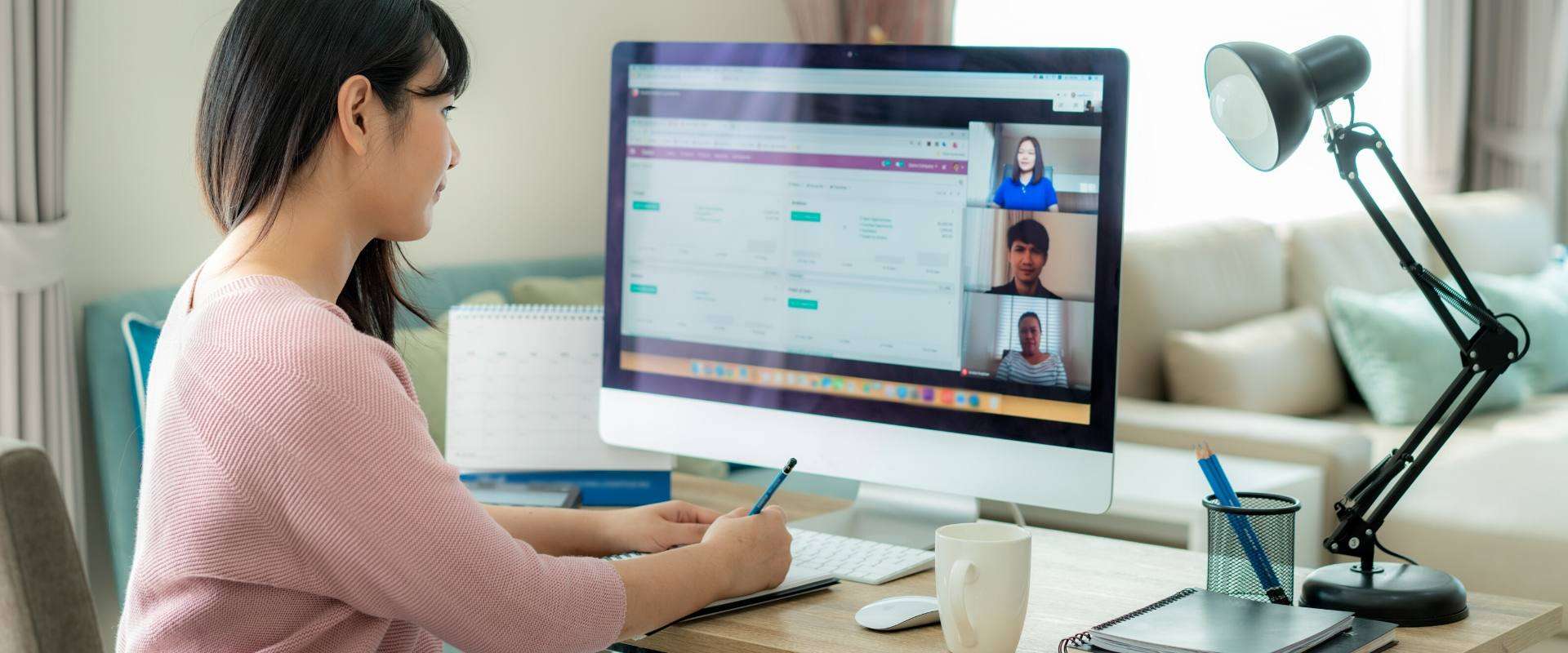How Prepared is Your Company for a Post-COVID Workplace?
Coronavirus has globally impacted the future of work. At the beginning of the COVID-19 pandemic, many workplace changes were considered temporary adjustments to weather the pandemic. However, the World Health Organization predicts COVID-19 could take years to contain. This means that previous workforce strategies adopted in response to the Coronavirus are now part of our new normal.
How prepared is your company for a post-COVID workplace? What if a second wave occurs, or kids don’t return to the classroom in the fall? In this article, we’ll discuss ways to address possible scenarios so you can protect your business and employees moving forward.
COVID-19 has Changed the Workplace
The workplace has changed significantly in a short period of time. Just three weeks after COVID-19 began, 62% of Americans transitioned to working remotely. Now that the economy is in recovery, many businesses have reopened and are ready for employees to return.
In a recent Citrix survey, 64% of employees stated they aren’t comfortable going back to the office yet. However, some workers miss the in-person interaction and will want to return to the office. It’s important for businesses to be flexible about how and where their employees work to ensure success in a post-COVID environment.
Preparing for a Post-COVID Workplace
If your company is ready for employees to come back to the office, it’s important to consider all the factors. You may want to take a phased approach instead of having everyone come back at once.
One way to gauge employee sentiment about returning to the office is by conducting a feedback survey. This will give you a better understanding of what they need to feel safe and perform their jobs successfully. By conducting an employee survey, you can gain insight into the following:
- How your employees feel about working from home
- How your employees plan to handle work and childcare responsibilities if schools don't re-open or cases spike again
- What additional equipment is needed for staff who may continue to work remotely
- Who to potentially recall from furlough or layoff
- What type of work schedule your workers prefer
- Who needs the most in-person interaction, as well as, who has the most challenges working remotely
For more information about working from home surveys, the Leesman Home Working Assessment is a helpful resource.
Mapping Out the Workspace
There are different ways you can approach restructuring an office space. You can ask for a blueprint of the work area, and highlight paths most at risk for multi-person traffic. You can also use workplace function technology, like LivePlatform, which provides data to employers about how employees use the workspace.
Mapping out common areas will help you make informed safety decisions for the employees you manage. From there, you can mock-up potential changes to the office such as:
- The reduction of adjacent desk spaces
- Repurposed conference rooms
- Socially-distanced break rooms
- Inclusion of hand sanitizer stations
- Here is an example of a pre-COVID and post-COVID mock-up below:
Adapting Physical Designs to Virtual Needs
Managers need to continue adapting the current office layout, so both in-person interactions are distanced, and virtual communications are seamless. Employees will need private spaces that provide separation from others, as well as virtual conferencing capabilities with little outside distraction.
Leaders can ask high-level executives to consider adding acoustic-friendly, visually private office partitions or virtual booths to their budget. In-office workers can continue education and training of remote teams while at their desk, or inside of a virtual booth. These designated virtual areas will make it easy for people to avoid shared meeting spaces, and help propel communication forward. Keep in mind, protocols for personal desk and virtual booth cleanliness will also need to be in place.
Full-Time Remote Status
A remote work schedule allows employees to work from home or spaces other than the office. Employees can check in with team members or managers during morning and afternoon huddles and collaborate with co-workers virtually to stay on-task. This helps reduce COVID-19 transmissions by limiting in-office interactions.
In-Office Flextime Status
An in-office flextime schedule means the employee works during core business hours while other hours worked are negotiable. This ensures team members have set times for project collaboration and communication while office hours are more staggered.
A company could have core business hours from 9 a.m. to 4 p.m. every day. An early riser could start working at 7:00 a.m. Meanwhile, someone who likes to stay later could start the day at 9:00 a.m. During core hours, lunch breaks would be staggered based on office-arrival times, eliminating the need for everyone in the break room at once. Likewise, if an employee has to pick up or drop off kids, it gives him or her the schedule flexibility to do so.
In-Office Rotating Status
An in-office rotating schedule is when employees work shift cycles that balance skill sets, experience, and workflow needs. Working hours are rotated between shifts that split up business hours to ensure there’s adequate coverage. Schedules would switch weekly or bi-weekly so employees have a balance between morning and afternoon shifts.
An in-office rotating status might be beneficial for working parents in the event schools do not reopen in the fall. This option also limits employees per shift, and maintains staffing throughout critical business hours.
In-Office Full-Time Status
A full-time office schedule is still a viable option for employers to offer their staff. If you’re planning to propose this, also consider providing one or two alternate work schedules. That way you can stagger employees and limit congregating in common areas.
Hybrid Status
A hybrid schedule allows employees to split their time between working from home and at the office. This combined solution helps workers maintain productivity during remote days, and increases co-worker communication at the office. It also prevents large groups of employees from congregating.
While each of these schedules is ideal to help limit future COVID-19 exposure, they can also be combined. For example, an employee could have a rotating status to work different shifts remotely as well as in the office. Meanwhile, a worker might need a remote flextime schedule so he or she can work core business hours while at home.
There are a variety of combinations possible that you can take advantage of to promote productivity.
Whether adopting a new model or adapting an existing schedule, it’s important to create a list of employee expectations. Here are some questions to consider prior to communicating your expectations to employees:
The set of workforce challenges managers now face are more difficult than those in previous years. Teams are dispersed, which can create communication barriers. While platforms like Zoom and Monday.com help bridge this gap, self-service apps can also promote better communication with employees.
Your employees handle most of their daily activities on their mobile devices already. For companies offering hybrid or remote schedules, a self-service app promotes staff management, communication, and accountability. Here a few additional ways self-service apps can help you communicate with employees:
Company Newsfeed
As information changes rapidly, keeping your employees informed is a necessity. A company newsfeed allows you to quickly notify employees about tasks that need immediate action.
Text Messaging
Using text messaging for employee communication is becoming increasingly popular. 90% of SMS messages are read within 3 minutes, so it’s an effective way to communicate with your staff on everything from training to open enrollment.
Having different employee communication methods removes barriers and makes it easier to engage a dispersed workforce. For more information on how tools like self-service apps help automate complex payroll and HR workflows and increase employee communication, read Building a Healthy Culture for Remote Workers.
Moving Beyond COVID-19 Together
Businesses need to prepare for a post-COVID workplace now. If your company is preparing to return to the office, it’s important to have an open discussion with your employees. Gather their feedback and let them know what schedule options are available. Talk to your staff about what they can expect in the office moving forward and utilize technology to keep those lines of communication open. We can all adapt to changes that prioritize our productivity, health, and safety as long as we do it together.
Resources
These resources can help employees and managers work safely and efficiently. At the end of the day, the future of the workforce goes beyond a temporary COVID-19 crisis response. As managers and employees, we must adapt to a post-COVID-19 way of work.




